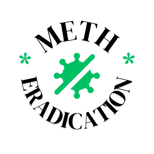
Beyond the Streets: How Meth Addiction Harms People and the Planet and What We Can Do About It
The Human Toll of Meth Addiction
Meth doesn’t just destroy lives—it fractures communities. For homeless populations, addiction often becomes both a cause and consequence of their instability.
1. Health in Freefall
Meth use leads to severe physical and mental health declines: tooth decay (“meth mouth”), skin infections, paranoia, and cognitive impairment. For those without stable housing, these issues are compounded by exposure to harsh weather, malnutrition, and lack of medical care.
2. A Cycle of Isolation
Addiction drives individuals away from family, social services, and employment opportunities. Homeless encampments, where meth use is prevalent, become isolated pockets of despair, often stigmatized rather than supported.
3. Strain on Communities
Public spaces contaminated by meth use pose risks to bystanders, especially children. First responders and social workers face dangerous exposures, while local governments grapple with costly cleanup efforts.
The takeaway: Meth’s human cost is urgent—but solving it requires addressing its environmental fallout too.
Meth’s Silent Environmental Impact
Meth production and use don’t just harm people—they poison ecosystems. Here’s how:
1. Toxic Chemical Residues
From Production: Illegal meth labs (even makeshift ones) use corrosive chemicals like ammonia, lithium, and hydrochloric acid. These toxins seep into soil and waterways, killing wildlife and contaminating drinking supplies.
From Use: Meth residues linger on surfaces, in ventilation systems, and in discarded paraphernalia. Rainwater can wash these toxins into storm drains, spreading contamination.
2. Waste That Outlives Us
Syringes, plastic pipes, and meth-lab debris often end up in landfills or abandoned lots. These materials leach chemicals for decades, creating long-term hazards.
3. Carbon Footprint of Neglect
Traditional meth cleanup relies on harsh chemicals and energy-intensive methods, further polluting air and water. It’s a band-aid solution that perpetuates harm.
The takeaway: Meth’s environmental damage is a public health crisis in slow motion.
Solutions That Heal Both People and the Planet
At Meth Eradication, we’re redefining meth cleanup by pairing compassion with sustainability.
1. Eco-Friendly Decontamination
Plant-Based Cleaners: Our biodegradable solvents neutralize meth residues without toxic side effects.
Energy-Efficient Tech: HEPA-filtered air scrubbers and low-energy heaters reduce emissions during cleanup.
Zero-Waste Pledges: 98% of hazardous waste is recycled or neutralized via EPA-certified partners.
2. Community-Centered Outreach
Harm Reduction Partnerships: We collaborate with shelters and NGOs to connect users with rehab programs.
Safe Space Initiatives: Post-cleanup, we advocate for converting vacant lots into community gardens or housing—turning blight into hope.
3. Policy Advocacy
We push for regulations that fund green cleanup methods and prioritize housing-first policies to address homelessness at its root.
A Path Forward
The image of two people lost to addiction isn’t just a call to action—it’s a reminder that every step toward recovery must honor both human dignity and environmental stewardship. By choosing eco-conscious meth cleanup, we can:
Protect vulnerable populations from toxic exposures.
Prevent long-term ecological harm.
Rebuild communities with sustainability at their core.
We’re not just cleaning up meth at Meth Eradication; we’re cleaning up the way the world responds to it.


